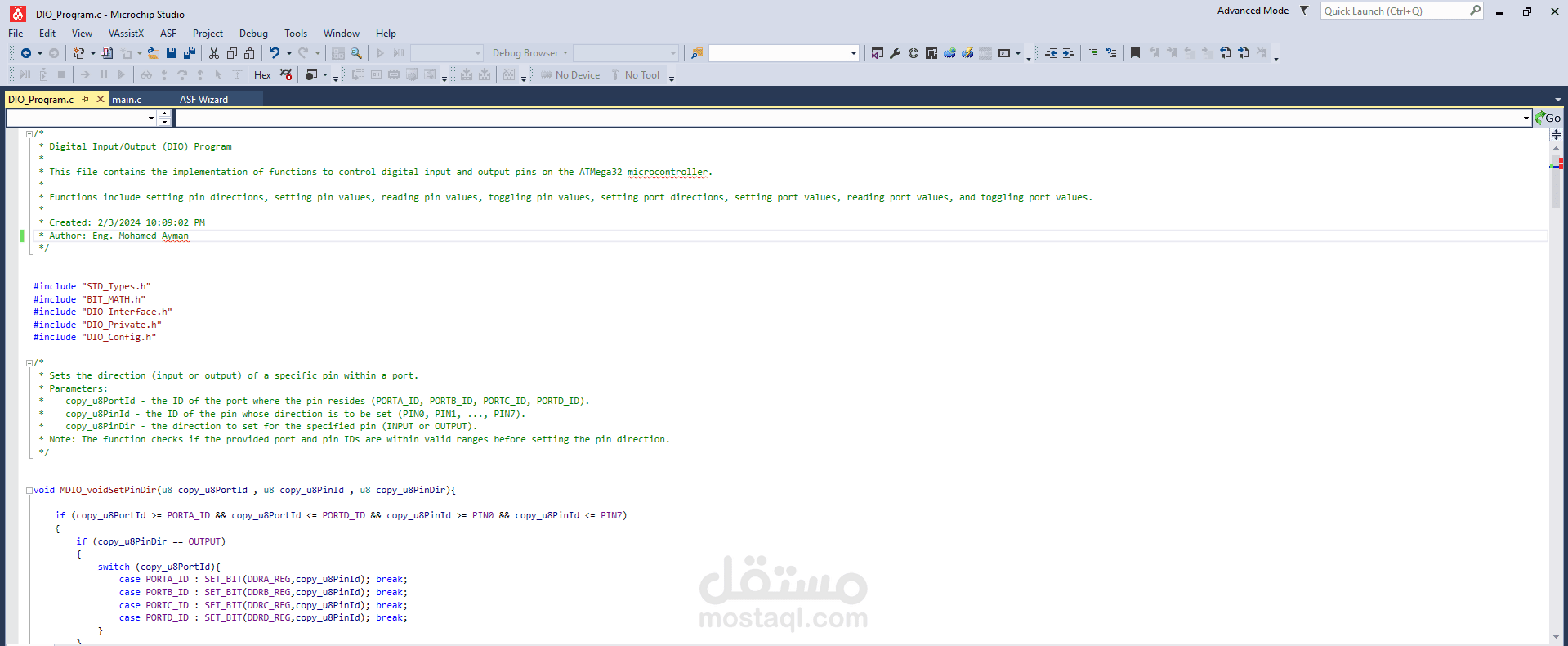Dio Driver
تفاصيل العمل
writing a DIO Driver for the ATmega32 on the ATMEL Studio
Requirement Analysis: Begin by understanding the specific requirements for asynchronous I/O operations in your target system or application. Identify the types of I/O operations (e.g., file operations, network communications) that need to be supported and the performance characteristics required.
Design: Design the architecture and interface of the DIO driver. This includes defining how applications will interact with the driver (APIs), how events or callbacks will be handled, and how the driver will manage internal data structures and state.
Implementation: Implement the core functionality of the DIO driver based on the design. This involves:
Asynchronous Operation Handling: Implement mechanisms to initiate and manage asynchronous I/O operations without blocking the calling application.
Event Notification: Set up mechanisms to notify the application when an I/O operation completes, encounters an error, or requires attention.
Buffer Management: Manage buffers efficiently to handle data being read from or written to external sources.
Concurrency Management: Ensure thread safety and manage concurrent access to shared resources within the driver.
Error Handling: Implement robust error handling mechanisms to deal with unexpected situations during I/O operations.
Testing: Develop and execute comprehensive tests to ensure the reliability, performance, and compatibility of the DIO driver. Test various scenarios including different types of I/O operations, edge cases, and error conditions.
Integration: Integrate the DIO driver with the target system or application. Ensure compatibility with the operating system or runtime environment APIs and adhere to any platform-specific guidelines or standards.
Documentation: Document the usage, APIs, configuration options, and internal workings of the DIO driver. Provide clear examples and guidelines for developers who will be using the driver in their applications.
Optimization and Performance Tuning: Profile the DIO driver for performance bottlenecks and optimize critical sections for improved throughput and responsiveness.
Maintenance and Support: Once deployed, provide ongoing maintenance and support for the DIO driver. Address bug fixes, compatibility issues, and updates as necessary based on feedback and changing requirements.
